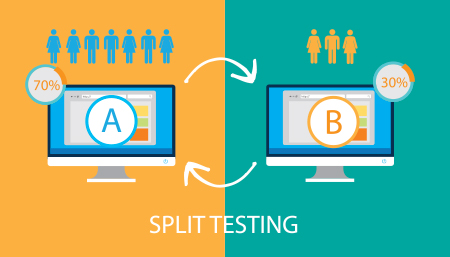
Every small business owner with a website can benefit from using split testing, also called ‘A/B’ testing. It’s an easy way to quickly and efficiently find out what works and what doesn’t. Furthermore, it will also allow you to tweak your content for maximum effectiveness. There’s no doubt about it, split testing is something that all business owners should be doing. In this article we’ll look at three different ways that you can implement it into your content strategy to ensure that you get the most out of your website.
1. Ad Copy
Earlier, we talked about Google’s Keyword Planner, and why it’s a great tool for every small business owner. It allows you to find out which keywords people are searching for, and what kind of traffic these searches are getting. However, that’s not the full story. If you plan to use PPC (Pay Per Click) marketing, once you’ve figured out which keywords you would like to target, then you need to write your ad copy.
The problem is that off the bat, you won’t know what kind of pitch is going to work best. That’s where split testing comes in. You can write two different pitches and then test them to see which draws more leads, and ultimately results in more sales.
2. Landing Pages
Once you’ve created a landing page, you’re going to want to split test it as well. You can do this by making minor alterations to the page, and comparing which one brings in better results. Depending on what the purpose of the landing page is, this could be capturing emails, getting people to make a donation to a charity, or making a sale. It’s worth noting that you shouldn’t split test your ad copy and landing page at the same time. Instead you should choose one of them to optimize, do several split tests, and then work on the other one.
3. Email Campaigns
If you have a bank of customer’s email addresses, then you should be split testing the emails that you send out to them. Again, you can tweak the content by making it longer or shorter, or even changing the images or subject line. This can have a great long term benefit for your bottom line. For example, if you have a set of ten emails that automatically get sent out to a customer who signs up for your newsletter, then you can split test these over time to figure out which emails work, and which don’t. Once you have these emails optimized, you can set them and forget them.
Final Thoughts
There are a few things to keep in mind when split testing your content online. The first is that you shouldn’t make too many changes between each test. For example, if you make four large changes to a landing page, and that version does better than the original, you probably won’t know exactly why it’s better. As a general rule, it’s better to change one thing at a time, for example just the images, and then split test it. By using this method you’ll always be able to pinpoint why something works, or why it doesn’t.
That caveat aside, split testing is an awesome way to improve your website, and increase the number of conversions that you see. If you’re ready to start split testing, and you want to take your website to the next level, then contact Superiocity today.
